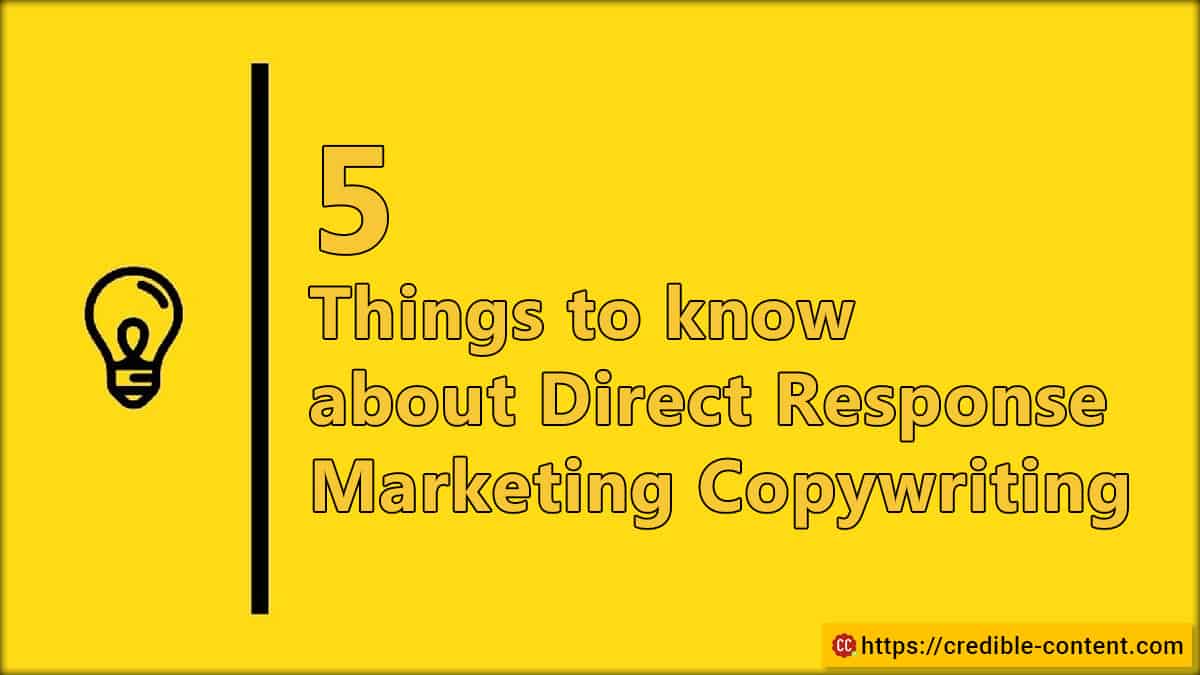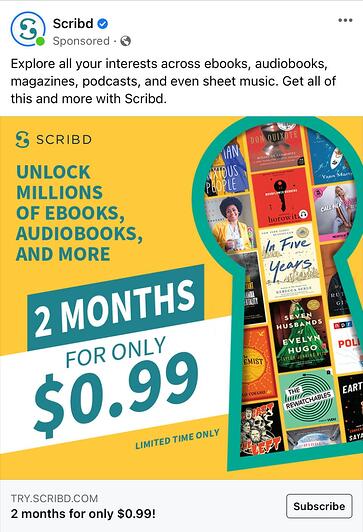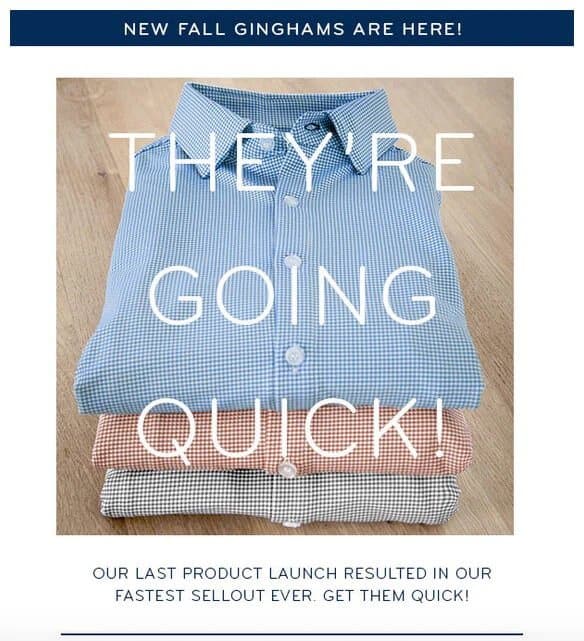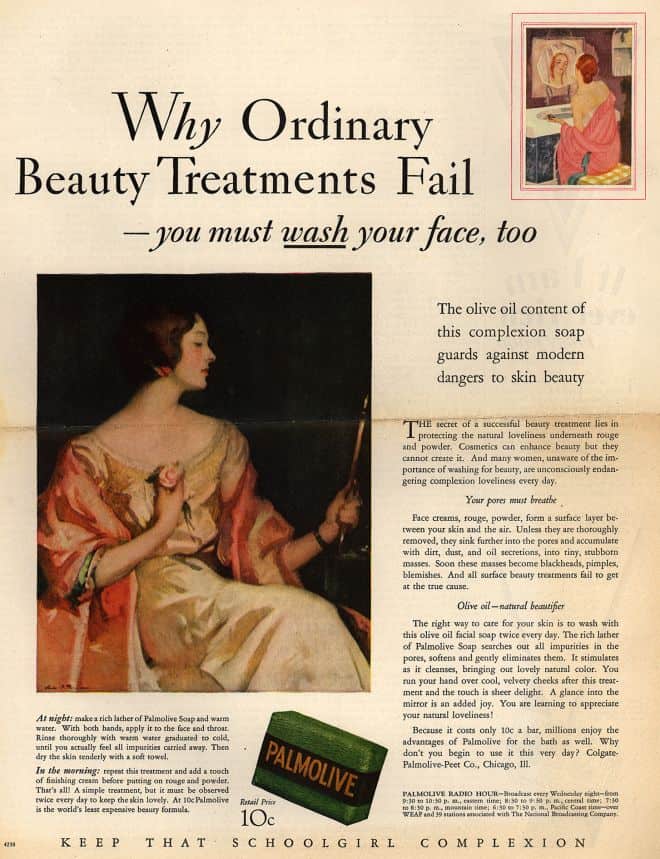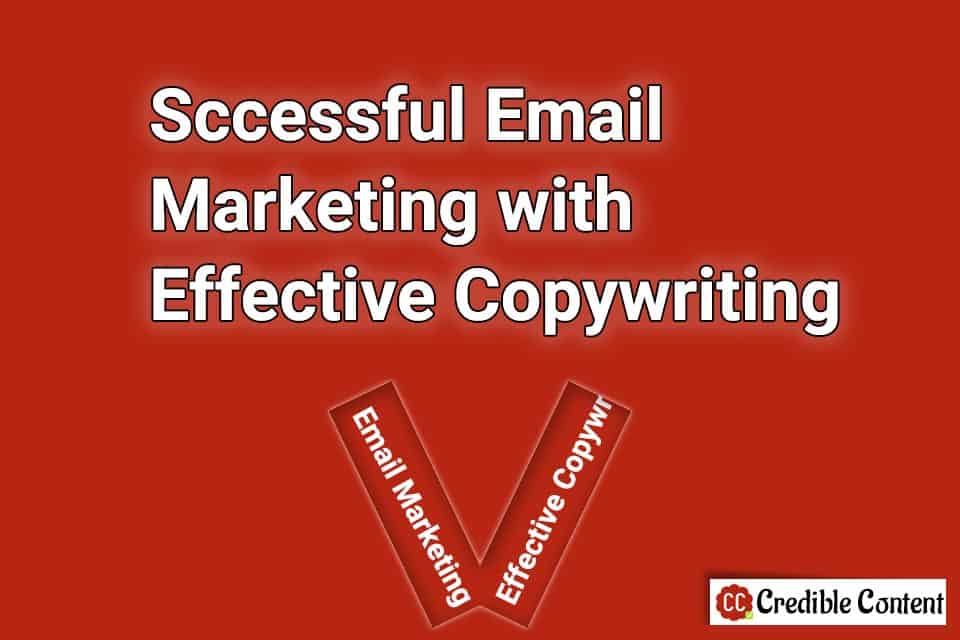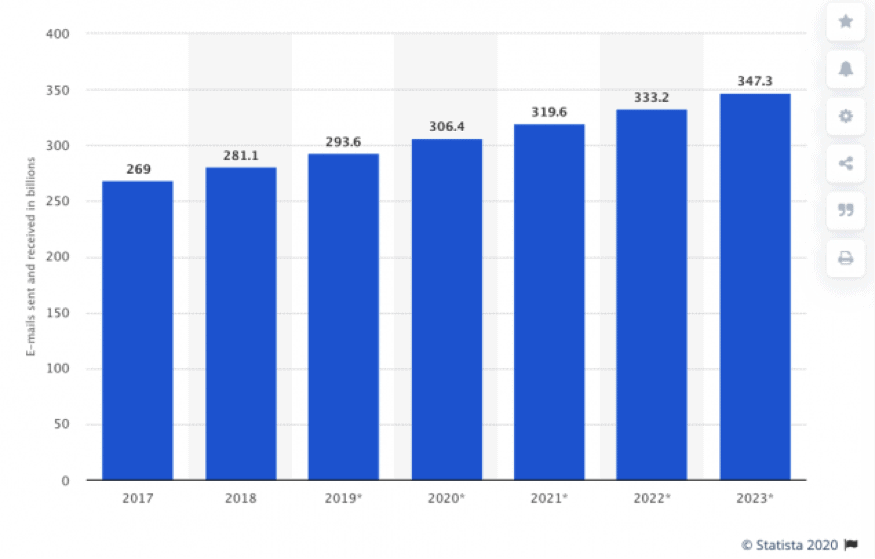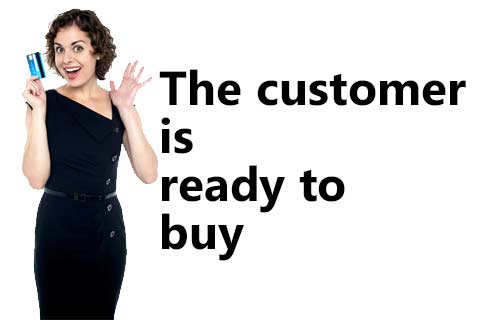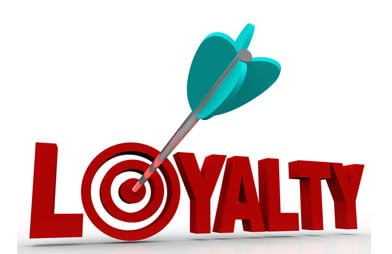Direct response marketing is the sales technique that invokes on-the-spot response.
It is different from lead nurturing which can take a long time.
Direct response marketing gives measurable results almost instantly.
Therefore, copywriting for direct response marketing is quite different from copywriting for content marketing.
Whereas content marketing is a sustained effort, direct response marketing elicits a response instantly.
Performance can be measured the moment the campaign is launched.
The call to action of a direct response marketing campaign isn’t always buying something or subscribing to something.
It can be downloading a white paper. It can be subscribing to a mailing list. It can be opting for a free offer.
In that sense, you can nurture long-term leads even through a direct response marketing campaign. It is just that, more than focusing on making the readers aware, your copywriting must focus on eliciting a response.
How is copywriting for direct response marketing different from content marketing?
Content marketing is all about building a long-term readership or an audience.
You inform them. You educate them. You engage them.
The primary purpose of content marketing is to remain in front of your audience in a meaningful manner and keep them engaged through informative and useful content.
In direct response marketing on the other hand, you want people to act immediately.
Through your copywriting you make a compelling case for taking an immediate action.
You create a sense of urgency.
You make an irresistible offer.
You make it clear that not acting would be a great error of judgement.
Here is a good example of direct response marketing that elicits immediate response.
As you can see, this advertisement doesn’t inform people about what Scribd is. It is assumed that people are aware of its content.
They are simply offering people an irresistible offer.
Readers can access all the content of the service for two months just for $ 0.99.
You either take the offer or you don’t take it.
The result is immediate.
Content marketing is a sustained effort.
It involves publishing blog posts, social media updates, and broadcasting infomercials on TV and radio.
There is no need to ask people to do something.
They can passively consume your content and if they want, they can interact with you.
In direct response marketing, people are asked to sit up straight and act immediately.
There is less of education and information, and more of action-taking.
The return on investment in content marketing comes somewhere in the future.
The ROI in direct response marketing comes immediately, during the current campaign itself.
Hence, you write the copy accordingly.
Listed below are 5 things you must know about doing copywriting for direct response marketing.
1. Immediate action is required
When copywriting for direct response advertisements and marketing materials, keep in your mind that immediate action is required.
What does that mean?
You use lots of action words like download (if you want them to download an e-book), or download immediately, or download for free, or no-obligation download, and such.
If you want them to subscribe, use expressions like subscribe now, subscribe immediately, subscribe for free, or submit your email to download our free e-book, and such.
Right now, immediately, urgently, and now, are some powerful words when writing copy in direct response marketing.
2. Invoke a sense of urgency
You often come across expressions like
- Buy before it’s too late
- You are running out of time
- Only two seats left
- Final call
- It may be your last chance
- Your last chance to save 50%
No matter how often these expressions are used, advertisers and marketers vouch for them. They always work.
You must have heard the expression FOMO when reading about content writing and copywriting.
It stands for “Fear of Missing out”.
A good example:
You just booked a flight to your favorite vacation destination, and you are wondering which hotel rooms to book.
Suddenly a message pops up on the website where you are booking your flight:
“Hurry! 2 premium rooms available at regular rates for these dates.”
Isn’t this an irresistible offer you wouldn’t like to miss?
Urgency here is important because advertising research has shown that the longer someone ponders over an offer, the greater is the chance that he or she will talk himself or herself out of it.
There is a psychological term called “Loss aversion”. It comes from the concept of “risk aversion”.
We have a primal fear for risks because in the olden days when humans lived in wilderness, risks could be deadly.
Various studies have shown we are more averse to losses than we are eager for gains.
In direct response marketing copywriting sense of urgency is invoked keeping this human tendency in mind.
Your offer needs to be time sensitive or quantity sensitive.
You need to invoke a strong take-it-or-leave-it situation.
Other expressions that raise a sense of urgency
- Prices going up soon
- Only 3 copies of the book left
- We are accepting just 2 more members
- Buy now or the offer expires
- This offer expires in 2 hours
- Valid only today
- Delaying will cost you money
- Your last chance
3. Come to the point immediately
People have a short attention span.
It is even shorter when one is reading direct response marketing copy.
People are anyway averse to receiving offers that ask them to spend money.
Therefore, whenever you make a strong point, come to the point immediately.
There is a nagging habit among many copywriters to keep beating around the bush (creating the atmosphere) and by the time they come to the meat of the offer people are bored or distracted.
What is their most vexing problem?
What solution do you offer?
Why your solution is the best (in case there are multiple solutions available in the market)?
Some copywriters ask multiple questions before offering a solution.
Something like
Are you facing this?
Are you in this type of situation?
Are you suffering?
Are you facing problem with your current infrastructure?
This goes on until they have asked 10-15 questions and by that time, the reader is bored.
I’m not saying this type of copywriting is bad.
You just need to be very sure that these questions are highly important to the readers.
Even if you need to ask a question, make sure they are relevant.
Otherwise, get on with making your point.
Take for example this banner advertisement from Fizzle that provides productivity tools to content creators who want to make a living doing what they love.
Most of the content creators love doing what they do but their biggest problem is that they don’t make money, and to make money, they often must ignore what they love doing.
This banner represents and provides a solution for their biggest problem – they can continue doing what they love, and they can also make a living doing the same.
4. Understand your readers
Before one of the greatest copywriters Claude C. Hopkins launched the Pepsodent campaign in America most of the people didn’t brush.
This was the late 19th or the early 20th century.
Their teeth were dirty and there was a discolored film over everybody’s teeth.
People didn’t even know that they wanted to get rid of that annoying yellowish film.
When he started working on the Pepsodent campaign he did extensive reading to know what would get the prospective customers of the toothpaste interested.
Going through different dental textbooks he came across a reference of mucin plaque that gets deposited over your teeth when you don’t brush for a few days.
It makes your teeth look yellowish or grayish.
He decided to call it “the film”.
He knew that everybody wanted beautiful teeth.
His campaign was
Just run your tongue across your teeth. You’ll feel a film – that’s what makes your teeth look ‘off color’ and invites decay.
The campaign was a huge success and within three years almost 50% of America was brushing its teeth.
If he hadn’t read all those dental textbooks, he wouldn’t have come across the concept of “the film” and then use it in his campaign.
In direct response marketing copywriting, it is very important to understand the needs of your readers.
The more you understand the needs of your readers, the better will be your copywriting, and the more effective will be the response.
5. Carefully choose between long form and short form copywriting
Advertising legends like David Ogilvy were big proponents of longform copywriting for marketing.
Consider this example:
I remember when we used to actively read newspapers and magazines and they often published advertisements that look like articles.
Even these days such articles are called “advertorials”.
Direct response marketing isn’t something like you throw dirt at a wall and then see what sticks and what falls.
You need to test with various formats and various lengths of your copy.
Some people don’t like long form copywriting, and some people do.
You need to see how much information your prospective customers need before they can make a decision.
I neither support nor oppose long form content when it comes to copywriting because it differs from situation to situation.
Just focus on how much you need to communicate, and then communicate with full sincerity.
The key elements of direct response copywriting are
- Customer centricity
- A clearly defined CTA
- A sense of genuine urgency
- The ability to hook your readers
- Personalization and targeting
- A complete understanding of the needs of your readers.

